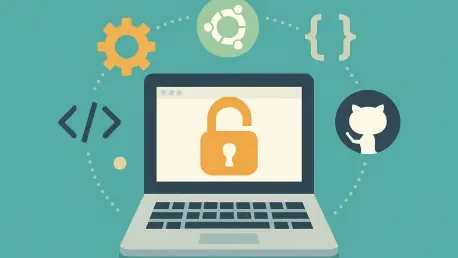Laurent Giraid stands out as a passionate technologist with a focus on Artificial Intelligence, particularly exploring machine learning, natural language processing, and the ethical considerations of AI. His current project, Orion, exemplifies a commitment to making machine learning more accessible through an open-source, user-friendly framework designed for anomaly detection. Let’s delve into his journey and insights to understand how he strives to make technology more approachable and beneficial for all.
Can you tell us about your educational background and how it influenced your interest in making machine learning more accessible?
I started with a strong foundation in computer science, securing my bachelor’s degree as part of the first cohort at King Saud University. This experience taught me the importance of independent learning, as we were introduced to new materials without much precedent. During my studies, I discovered MIT OpenCourseWare, which turned out to be an invaluable open-source resource. This introduction made me realize that accessibility to knowledge and tools is crucial for widespread technological adoption and innovation.
What role did your upbringing play in shaping your views on knowledge sharing and education?
Growing up in a household steeped in education, with a university professor and a teacher as parents, instilled in me the belief that knowledge should be shared freely. This environment highlighted the importance of disseminating information widely and laid the groundwork for my later interest in creating technologies that are accessible to all, ensuring that everyone, regardless of background, can benefit from advancements in machine learning and AI.
How did your experience with open-source resources during your education impact your motivation for developing accessible technology?
The interaction with open-source resources during my education was pivotal. It allowed me to see firsthand how beneficial having unrestricted access to educational tools and information could be. This experience reinforced the idea that the true value of technology lies in its accessibility. Today, in my work with Orion, I strive to make machine learning tools available in an open-source format, enabling users to not just use the technology but to learn from it and contribute back.
Could you share more details about your journey from King Saud University to MIT?
After finishing my degree at King Saud University, I took on a research role at King Abdulaziz City for Science and Technology, engaging in collaborative projects with MIT. This experience provided a seamless transition into MIT’s research ecosystem, where I was drawn particularly to Kalyan Veeramachaneni’s Data-to-AI group. The progressive and visionary approach of this group aligned with my interests, especially in terms of exploring large-scale and impactful applications of machine learning.
What prompted you to focus on time series anomaly detection for your master’s thesis?
Time series anomaly detection offers intriguing applications, from predicting mechanical failures to identifying security breaches. The ability to unveil unexpected patterns in vast datasets can provide critical insights. Such practical implications naturally lead to the decision to center my work on developing methodologies within this field, ultimately inspiring the creation of Orion, a framework capable of tackling these challenges effectively.
How does Orion work in terms of detecting anomalies, and what role does machine learning play in it?
Orion builds on a blend of statistical and machine learning-based models to identify anomalies. This means users can take advantage of advanced algorithms without needing in-depth machine learning expertise. By continuously logging and maintaining models within a user-friendly framework, Orion enables users to explore different anomaly detection techniques and assess their findings through a comprehensive platform.
Can you explain the significance of open-source in your project, Orion?
The open-source nature of Orion is crucial as it allows transparency and wide accessibility. By making the framework freely available, users can delve into the code, understand how the models operate, and even tailor them to their specific needs. This openness not only fosters trust but also promotes collaboration, with users contributing to and refining the tool, enhancing its reliability and effectiveness.
How does transparency in Orion’s design contribute to user trust and model reliability?
Transparency ensures that users are not just passive consumers but active participants in understanding and evaluating the system. Every step within Orion’s models is labeled and accessible, which helps users gain trust through comprehension before evaluating reliability through application. This approach demystifies machine learning models, enabling informed usage and fostering confidence.
What challenges have you faced in making Orion a user-friendly and accessible machine learning tool?
One of the main challenges is simplifying complex machine learning concepts without compromising the tool’s functionality and depth. Ensuring Orion can be used by non-experts meant we had to create intuitive interfaces and streamline processes while maintaining the sophistication required for effective anomaly detection. Balancing these aspects was a creative challenge that continuously required user feedback and iterative development.
How are you repurposing pre-trained models for anomaly detection, and what are the main challenges with this approach?
Repurposing pre-trained models involves utilizing their understanding of time-series patterns for anomaly detection—a task they weren’t originally designed for. While this approach can be efficient, it requires innovative prompt-engineering techniques to overcome challenges such as adapting these models to handle unexpected tasks like finding anomalies, which involves stretching their original capabilities.
Could you elaborate on the concept of prompt-engineering and how it’s applied to anomaly detection?
Prompt-engineering is about crafting inputs to guide pre-trained models in generating desired outputs, despite these tasks being outside their typical scope. For anomaly detection, it’s about using these prompts to utilize the models’ existing knowledge of time-series data, adapting them to highlight irregularities and anomalies without further intensive training, which is both time-efficient and computationally frugal.
How has Orion evolved since its inception in terms of model integration and user accessibility?
Since its inception, Orion has significantly expanded its range of integrated models, offering more options for users while maintaining simplicity in user interactions. We’ve refined the abstractions used, ensuring they accommodate varied models seamlessly, and continuously enhanced user support through clearer documentation and functionality, making the tool increasingly user-friendly.
What are the main abstractions you’ve implemented in Orion to make your models more accessible?
We’ve focused on identifying universal representations for machine learning models to standardize their input-output processes. This standardization allows for flexibility in the underlying processes, enabling users to interact with a diverse set of models consistently and intuitively, greatly simplifying the complexity and enhancing accessibility across different use cases.
How did you ensure that systems and models developed in Orion are reliable for various users?
Reliability stems from conducting robust testing across diverse scenarios and continuous user feedback integration. We maintain a cycle of iterative refinement, where user experiences and challenges directly inform improvements. This feedback loop, combined with rigorous model validation processes, ensures that Orion remains reliable and effective for a wide range of users.
Can you describe your approach to mentoring, particularly how you involved master’s students in your project?
Mentoring revolves around empowering students to explore and innovate independently within a guided framework. By involving master’s students in Orion, I provided them with the system documentation and support to develop and test their own models. This approach not only helps them hone their skills but also validates our abstractions’ usability, ensuring they can accommodate innovative additions.
How did you incorporate a large language model (LLM) as a mediator in Orion, and what benefits does it offer?
Incorporating an LLM provides an accessible interface for users, simplifying their interaction with Orion. This reduces the need for detailed technical understanding, akin to tools like ChatGPT, and ensures users can perform complex tasks with simple commands—Fit for training, and Detect for finding anomalies—thus making advanced AI capabilities approachable even for beginners.
What commands or functions do users need to know to effectively operate Orion?
Users primarily need to master two simple commands: Fit and Detect. Fit facilitates model training, while Detect empowers users to identify anomalies. These simple commands encapsulate complex processes, enabling users to interact with advanced machine learning functionalities effortlessly, ensuring Orion remains intuitive and approachable.
Can you share some statistics or feedback that highlight Orion’s impact and adoption in the community?
Orion has witnessed significant traction, with over 120,000 downloads and substantial community engagement, evidenced by the repository’s popularity on GitHub. This widespread adoption and positive community feedback underscore its effectiveness and the value it adds, illustrating its role as a vital tool for anomaly detection in diverse applications.
What are your ultimate goals for the future of Orion in terms of accessibility and impact?
The ultimate goal is to enhance Orion’s accessibility further while broadening its application scope. We aim to continuously refine and expand its features, ensuring it remains inclusive and relevant across various sectors. By fostering a vibrant open-source community, we hope to catalyze innovation, making advanced machine learning accessible for greater societal benefit.
How do you view the current measures of success for open-source projects compared to traditional academic measures?
Success for open-source projects aligns closely with practical adoption and impact rather than traditional academic metrics like citations. Real-time usage statistics, community engagement, and feedback offer more immediate and meaningful measures of success, reflecting the project’s ability to solve real-world problems and contribute broadly to technological advancement.









